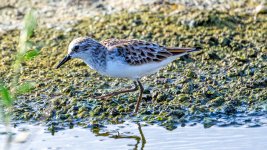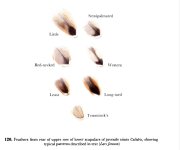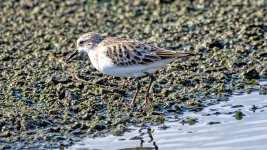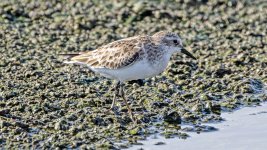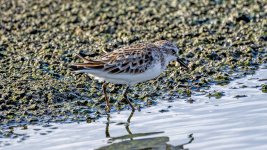I took this picture on April 2023 in Antalya-Turkey. Tertials of the bird, seems to exeed the tail (as you may know tail should be longer than wing feathers in Temminck’s). Middle toe is about the same length (or longer?) of the bill. Scapular fringes are whitish. Lore length is about half lengths of the bill. Leg color does not fit the Little stint… can this be an American vagrant i. e. Long-toed? Opinions please. Thanks.
